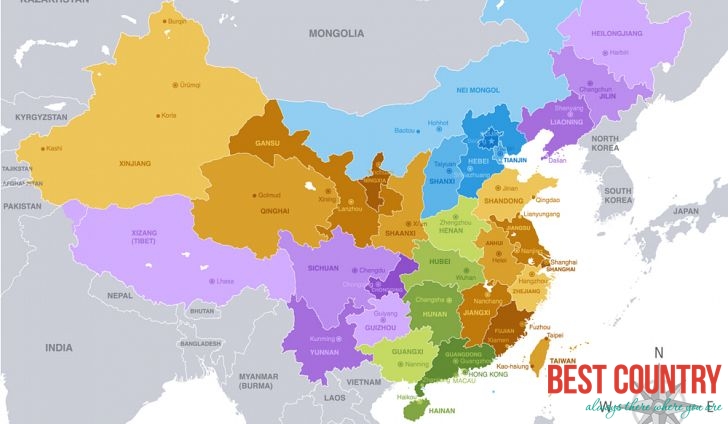The People's Republic of China administers 33 province-level divisions, including 22 provinces, five autonomous regions, four municipalities, and two special administrative regions:
Administrative divisions of the Republic of China
 Provinces are theoretically subservient to the PRC central government, but in practice provincial officials have large discretion with regard to economic policy. Unlike the United States, the power of the central government was (with the exception of the military) not exercised through a parallel set of institutions until the early 1990s. The actual practical power of the provinces has created what some economists call federalism with Chinese characteristics.
Provinces are theoretically subservient to the PRC central government, but in practice provincial officials have large discretion with regard to economic policy. Unlike the United States, the power of the central government was (with the exception of the military) not exercised through a parallel set of institutions until the early 1990s. The actual practical power of the provinces has created what some economists call federalism with Chinese characteristics.
Most of the provinces, with the exception of the provinces in the northeast, have boundaries which were established long ago in the Yuan, Ming, and Qing dynasties. Sometimes provincial borders from cultural or geographical boundaries. This was an attempt by the imperial government to discourage separatism and warlordism through a divide and rule policy. Nevertheless, provinces have come to serve an important cultural role in China. People tend to be identified in terms of their native provinces, and each province has a stereotype that corresponds to their inhabitants.
* Beijing
* Chengde
* Chengdu
* Chongqing
* Dali
* Dunhuang
* Guangxi
* Beihai
* Guangzhou
* Guansu
* Guilin
* Guizhou
* Haikou
* Hainan
* Hangzhou
* Harbin
* Henan
* Hubei
* Inner Mongolia
* Jiangsu
* Jiangxi
* Jinan
* Jingdezhen
* Jiujiang
* Kaifeng
* Kashi
* Kunming
* Lhasa
* Lijiang
* Luoyang
* Nanchang
* Nanjing
* Ningxia
* Qingdao
* Qinghai
* Qufu
* Sanya
* Shandong
* Shanghai
* Shanxi
* Shaanxi
* Sichuan
* Suzhou
* Tibet Is Xizang
* Turphan
* Urumqi
* Weifang
* Wuhan
* Wuxi
* Xi'an
* Xigaze
* Xinjiang
* Xishangbanna
* Yunnan
* Zhengzhou
* Zoucheng